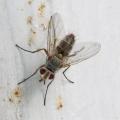|
 |
||
|
||
 Users Online
Forum Threads
Newest Threads
· Which Lonchoptera?· Sepsidae, ID please · Anthomyiidae ID · Which Lauxaniidae? · Anthomyiidae of Sain... Hottest Threads
Theme Switcher
Last Seen Users
Latest Photo Additions
|
Terms Infusion (Glossary) - v3.10
| Date and time
Login
Temporary email?
Due to fact this site has functionality making use of your email address, any registration using a temporary email address will be rejected.
Paul Donate
Latest Articles
· Voltinism in Chaoborus
· Vitaliy Nikolaevich ... · Mating behaviour and... · Oviposition into the... · African Invertebrates Syrph the Net
License Agreement - Click to Download Public files of Syrph the Net can be downloaded HERE Last updated: 25.08.2011 Shoutbox
You must login to post a message. 16.07.24 12:37  11.07.24 13:59 Following up on the update provided by Paul on the donations received in 2024, I just made a donation.
Follow my example
 07.03.24 01:01 Some flies preserved in ethanol and then pinned often get the eyes sunken, how can this be avoided? Best answer: I usually keep alcohol-collected material in alcohol
17.08.23 16:23 Aneomochtherus
17.08.23 14:54 Tony, I HAD a blank in the file name. Sorry!
17.08.23 14:44 Tony, thanks! I tried it (see "Cylindromyia"
 but don't see the image in the post. but don't see the image in the post.17.08.23 12:37 pjt - just send the post and attached image. Do not preview thread, as this will lose the link to the image,
16.08.23 09:37 Tried to attach an image to a forum post. jpg, 32kB, 72dpi, no blanks, ... File name is correctly displayed, but when I click "Preview Thread" it just vanishes. Help!
23.02.23 22:29 Has anyone used the Leica DM500, any comments.
27.12.22 22:10 Thanks, Jan Willem! Much appreciated.
 |
|
images in Diptera Gallery and Forum of their respective owners Powered by PHP-Fusion copyright © 2002 - 2024 by Nick Jones. Released as free software without warranties under GNU Affero GPL v3. SimpleAsThat |
||
| Render time: 1.69 seconds | 197,437,983 unique visits | ||










![header=[basicosta] body=[The distal one of the two plates in the axillary area of the wing along which the costa of the wing articulates. The tegula is the proximal one.<br />
Synonyms: humeral plate, subepaulet.<br />
Image given: http://www.dgrc.kit.ac.jp/~jdd/subwin/wingbase/wb_humeral_plate.gif<br /><img src='http://www.diptera.info/infusions/terms/images/wb_humeral_plate.gif' style='vertical-align:middle;' />] delay=[0] fade=[on]](../../infusions/terms/images/help.gif)


